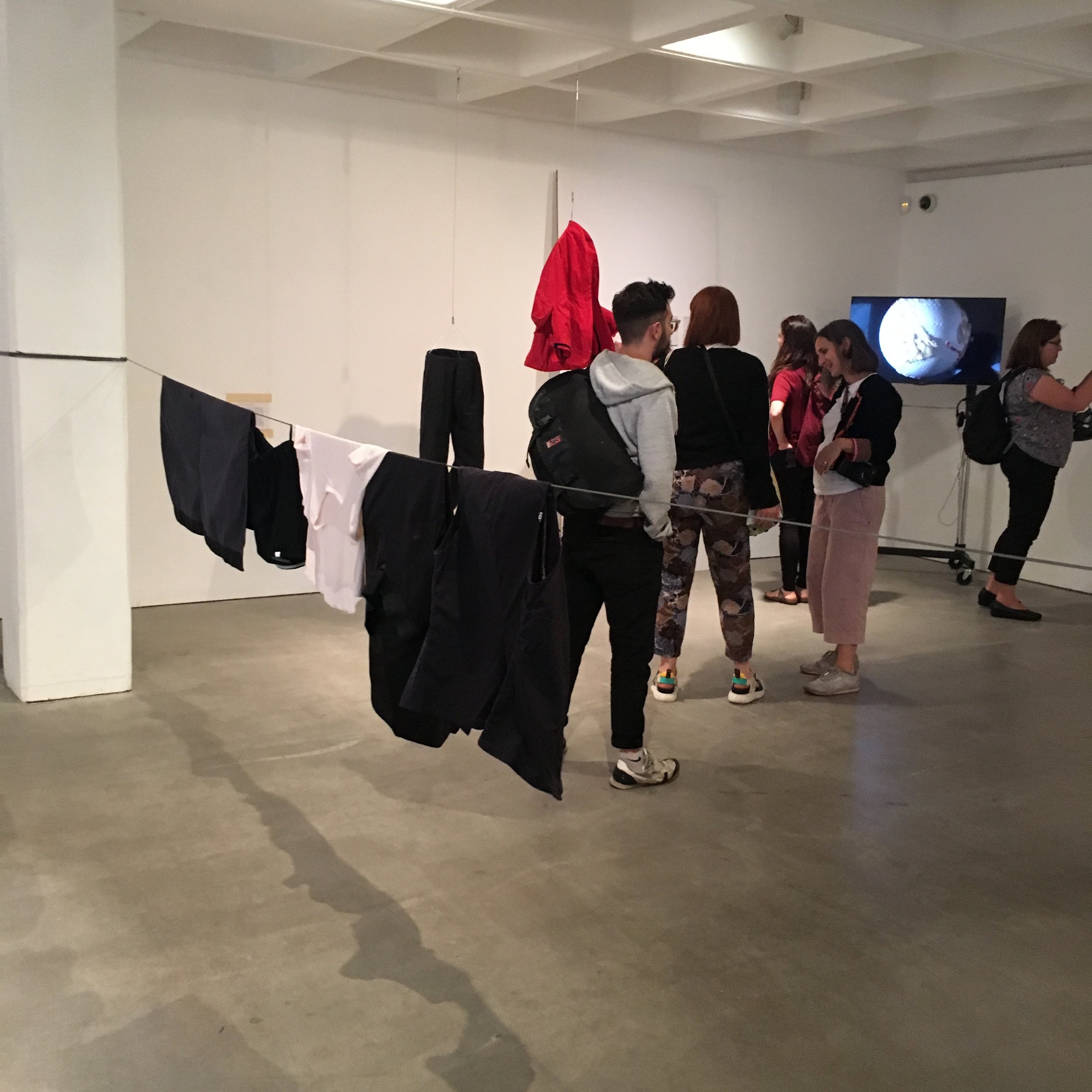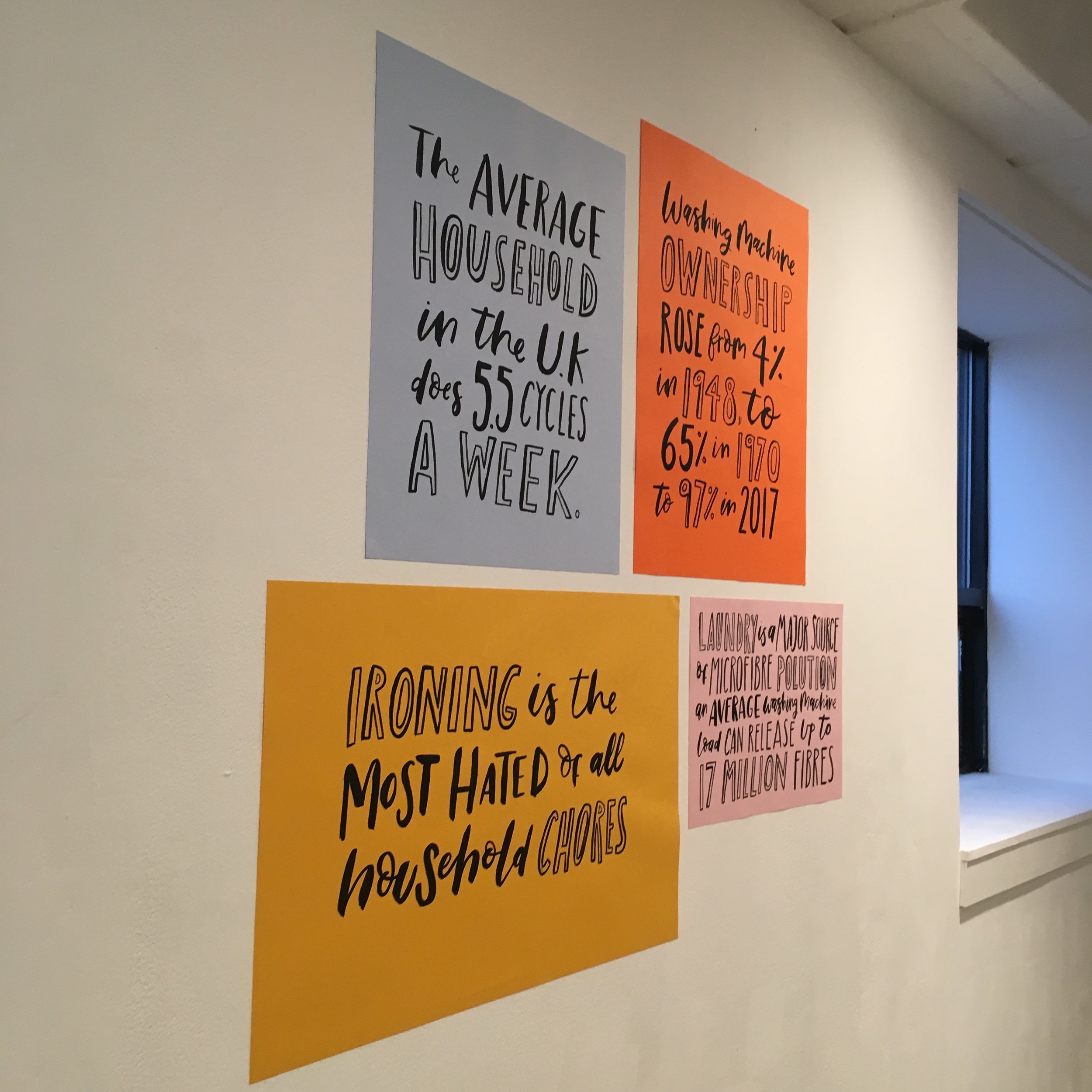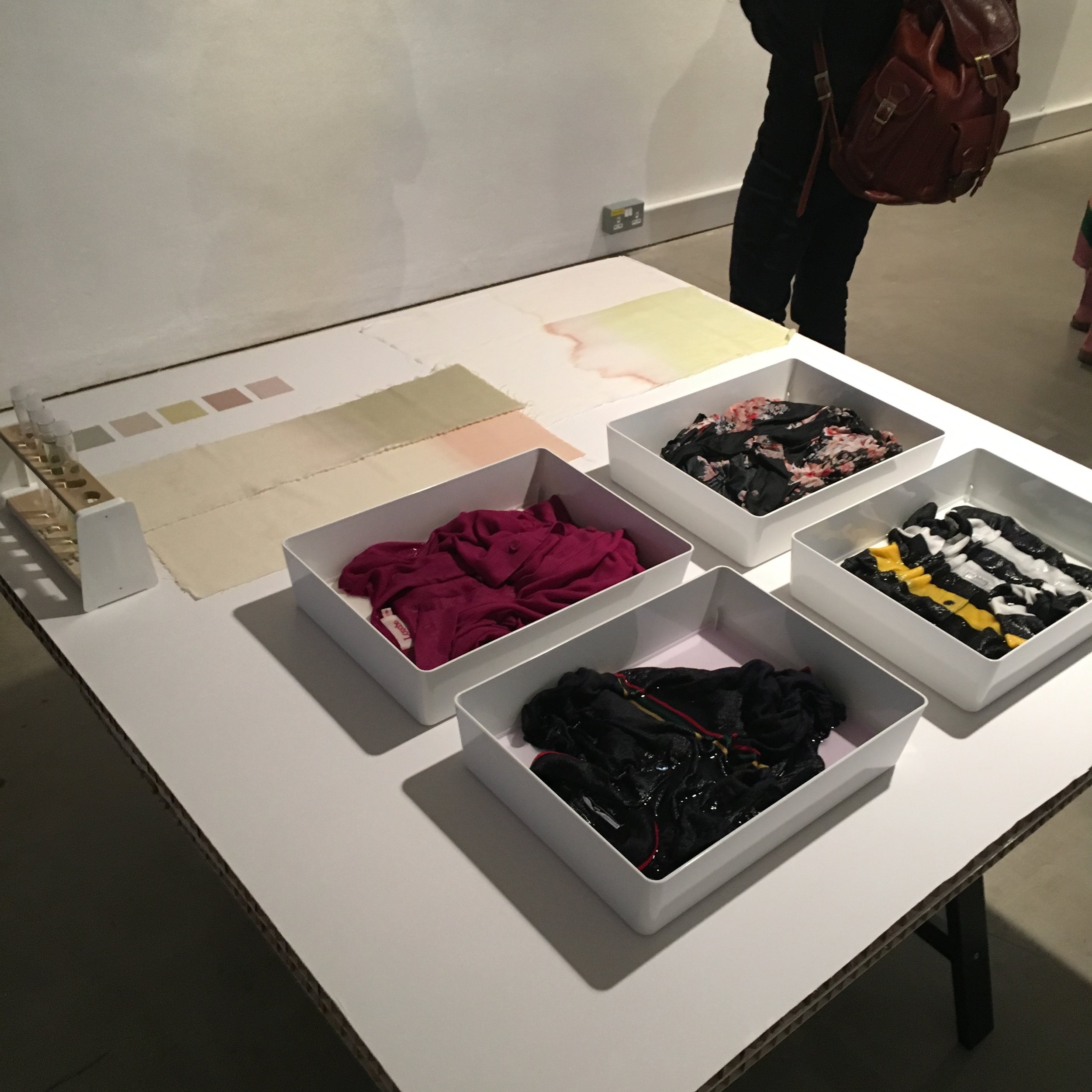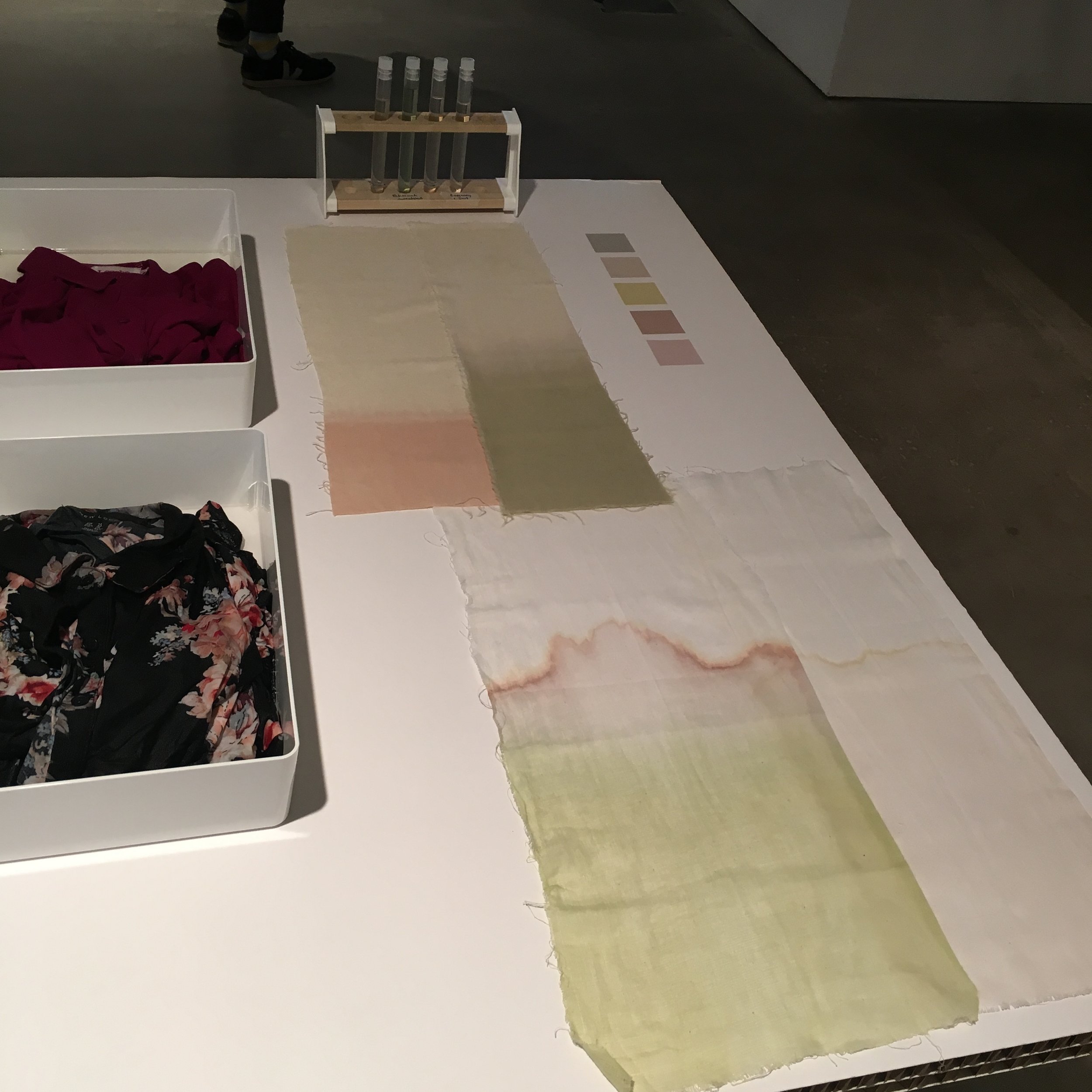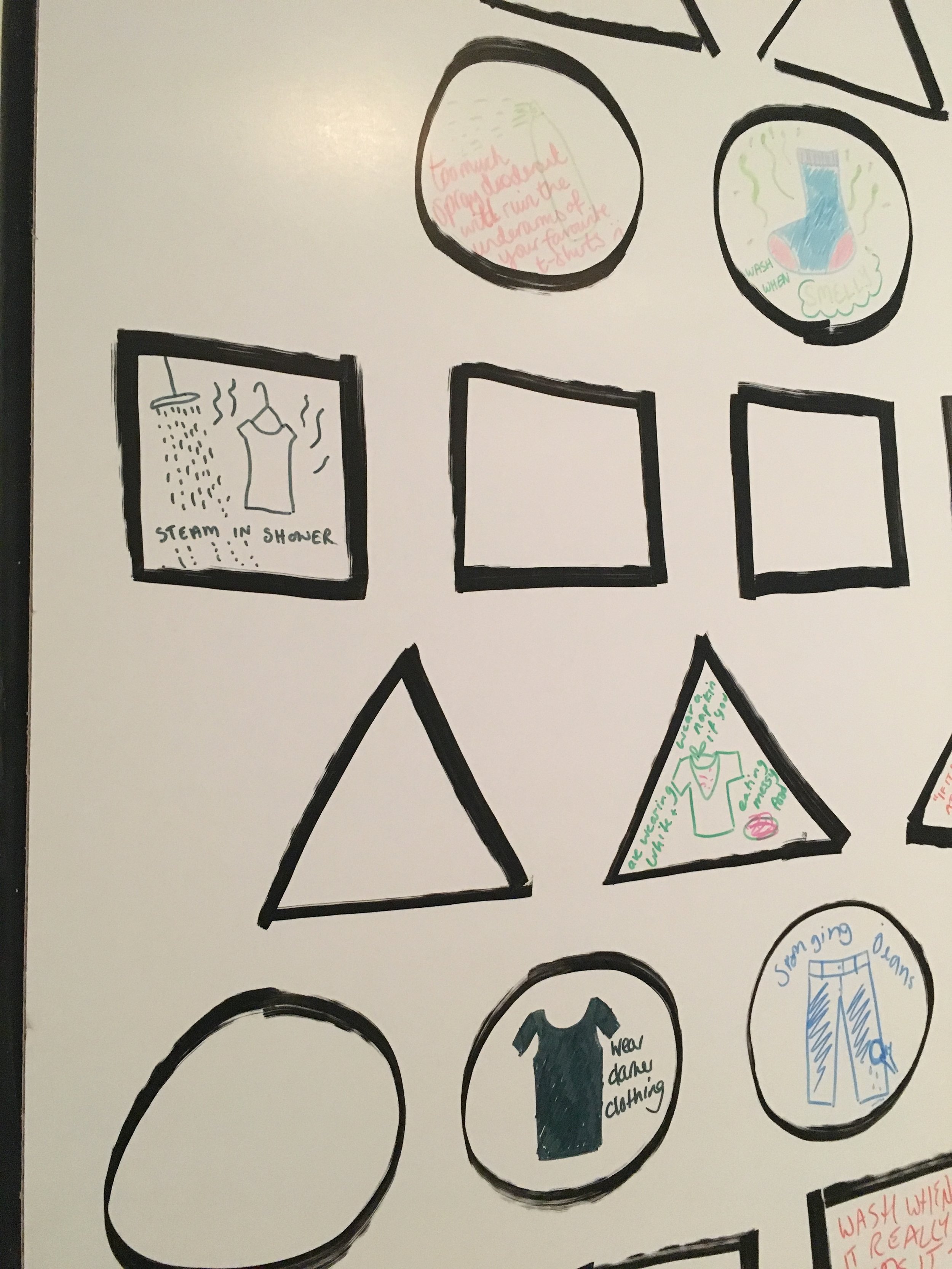Have you ever stopped to think about the impact on the environment when you wash your clothes? How many of you ever read the labels on the inside of your clothes, not just to find out what setting to put the washing machine on, but to find out what it's actually made of? For anyone who follows the news or keeps up-to-date with the environmental issues we're facing, it's becoming increasingly common to hear about the effects that the fashion industry is having on our planet. That's why it was great to see this event at the Arnolfini, called the Festival of Nature, and I'm super excited to share my experience with you guys as it’s so rare to have a sustainable fashion related event in Bristol! It is a weeklong festival, running from the 2nd - 10th June, celebrating all things nature related and this year they had a panel discussion called “The Nature of Fashion”, curated by The Good Wardrobe (follow her on Instagram guys @thegoodwardrobe). The aim of the talk was to explore how fashion can work with, not against, nature and I went along to find out more information about the latest eco-technologies being developed and what the experts had to say…
In addition to the panel discussion, there was an exhibition in one of the galleries called 'The Laundry Pile' (also follow them on IG @thelaundrypile), curated by a group of fashion activists, researchers and theorists. The effects that our everyday laundry processes have on the planet are rarely talked about and I found it fascinating to go around and learn so much information about it in a fun and interactive way. Did you know, it takes on average 48.5 litres of water to do one load of washing? To put that into perspective, it only takes 7 litres to flush a toilet, 15 litres to run a dishwasher cycle and you are meant to drink 2 litres of water per day, though most people struggle to get through this much! So that’s an insane amount of water being used and we never even see it, the fact that the machine just drains it away means we never have to think about it really. Between 1970 and 2014, the amount of energy used to do the laundry has more than doubled, and the average household in the U.K. does 5.5 cycles a week!
It would take 97 of these cups of water to do one load of laundry - thirsty work!
The exhibition also had a feature about the dye in your clothes and how it can seep into the water used to wash them, polluting the water and putting marine ecosystems at risk. Jade Whitson-Smith (a Lecturer in Knit in the Department of Fashion and Textiles at the University of Huddersfield) went a year without using a washing machine for her clothes and instead washed them by hand. She then used virgin materials dipped into the used wastewater to see the colours that had leaked from the original piece of clothing. As you can see from the photos, there were a range of colours, and when you think about all these chemicals going into the water supply, it’s not hard to see why our rivers and oceans are more polluted than ever.
There was also a wall where people could write helpful tips about laundry that other people might not know, I couldn’t resist adding my own one on there… (please excuse my Year 4 handwriting)
The panel for ‘The Nature of Fashion’ was made up of Dilys William (Director of Centre for Sustainable Fashion), Debbie Luffman (Product Director at Finisterre), Hannah Cowie (founder of Tamay & Me), Sven Segal (founder and designer of Po-Zu) and Sophie Mather (Material Futurist at Biov8tion). I was very impressed with the members of the panel as they described their work and how they had ended up working in sustainable fashion one way or another.
Hannah Cowie talking about the process behind the jackets she makes with Tamay.
Sophie from Biov8tion reminded us that it takes 2700 litres of water to grow enough cotton to make one t-shirt, and that we should be looking to other natural fibres to create garments. Bamboo, stinging nettles and the castor oil plant, which can be put into Nylon, were mentioned as alternative sources for materials. She also talked about new technologies such as a machine that can ‘inject’ colour into fibres with zero water (this is very excited because the dyeing process uses more water than any other stage of clothing manufacturing) and a new machine that can spin polyester a certain way to give it a cotton-like feel. Sophie talked about, while there are definitely a lot of issues surrounding sustainability and the environment, there is a new feeling of change that’s moving across the fashion industry. She said that for the first time brands, such as Nike, Adidas and Stella McCartney, are actually working together to try and find solutions to these problems and encouraging more companies to get involved, something that is quite unheard of in the fashion industry.
It was really exciting to hear Sven talk, as I’d been interested in his shoe company ‘Po-Zu’ for a while and really wanted to know about the materials behind the products. He talked about slowing-down fast fashion and told us that 23 billion pairs of shoes were produced in 2016, there were only 7.4 billion people in the world that year, I think that’s an average of 3 pairs of shoes per person! Po-Zu makes a range of vegan shoes too, and uses Pinatex, Coir (a mix of coconut husk and natural latex), cork and natural latex to make their shoes. They even make their shoeboxes out of compostable materials so you use it as a plant tray after your shoes arrive – how awesome is that!
Sven talking about the Better Shoe Foundation
At the end of the discussion they were only accepting three questions from the audience, I was selected and asked the panel “what do brands need to do in order to make ethical and sustainable fashion more appealing to the masses?” to which Sven responded “most importantly, the products need to look great and appeal to people on an aesthetic level”. This confirmed what I have been thinking for a while now; that sustainable fashion needs to market itself as an aspirational level of fashion, that way more people will buy into the idea even if they aren’t sold on the ethical and environmental benefits.
There was so much information at this event and the main thing I took away was how much passion everyone had for sustainable fashion, that really did inspire me! As textiles is the second most polluting industry in the world, the innovation of people like this can really make a difference to how the future of fashion will look.
Some handy tips I took away from the event:
- Washing your clothes at 30 degrees instead of 60 can save you more than 60% of your energy, and is better for the planet
- Buy a ‘Coral ball’ or Guppyfriend, to wash your synthetic clothes with in the washing machine, it catches the fibres and stops them being washed away with the wastewater
- Use the eco-button on your washing machine to ensure your wash is energy and water efficient
Further reading:
- http://www.cbc.ca/radio/thecurrent/the-current-for-march-26-2018-1.4592936/how-washing-your-clothes-is-polluting-the-ocean-1.4593180
- https://www.textileschool.com/154/eco-friendly-fibers/
- https://www.theguardian.com/news/shortcuts/2018/may/09/mohair-and-why-going-vegan-is-as-much-about-fashion-as-food


